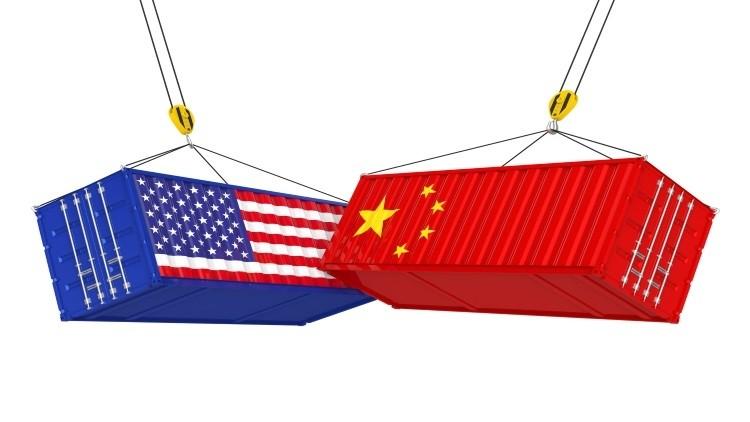3 Ways to Avoid Higher Networking Hardware Prices From the Trump China Tariffs
President Drumpf’s tariffs on Chinese goods are causing networking hardware prices to rise. In this article, we’ll look at three ways you can avoid the fallout.
You probably noticed that Mr. Drumpf’s tariffs are in the news again, with the president purportedly reaching a deal with Mexico to avoid a new round of tariff hikes.
That means little to the tech industry, however, which is far more concerned with what many—including BBC—have called a “trade war” with China.
Networking giants like Cisco, Juniper Networks, and Extreme are raising prices on specific products in response to the tariffs. Apple, Microsoft, Dell, HP, Intel, and other tech behemoths have asked to be excluded from the tariffs, saying (among other things) that they may have to raise prices to stay profitable if the tariffs continue.
What does the US-China trade dispute mean for data centers and service providers?
The history of Mr. Drumpf’s tariffs on Chinese goods—and China’s own tariffs on US goods imposed in response—is ridiculously complicated, but here are some key facts and dates that should help you techies understand the puzzle pieces that affect you the most.
-
Early 2018 - Mr. Drumpf imposes new worldwide tariffs on solar panels, washing machines, steel, and aluminum. Most network operators respond with a collective, “Meh.”
-
March 22, 2018 - Mr. Drumpf imposes new tariffs on $50-60B of Chinese goods, including electronics. Network operators start paying attention.
-
June 15, 2018 - Mr. Drumpf formally declares a new 25% tariff on $50B of Chinese goods, including network hardware. Network operators go into panic mode, while China vows to retaliate.
-
August 23, 2018 - China makes good on its threat, imposing 25% tariffs on $16B of imports from the US and promising more. Network operators go into whatever comes after panic mode.
-
Today - While there has been some diplomatic progress, so far—in total—the US has imposed tariffs on $250B of Chinese goods, while China has responded with tariffs on $110B of US goods.
So what does this mean for you data center/service provider people, who want to continue to provide great service without breaking your budget? It means you need to be smarter about what hardware you purchase and where you buy it from.
That’s easier said than done, but we’ve laid out a few pointers to help you get the best bang for your tech buck and make you look like the American Picker of network operators.
1) Keep the networking future in mind
While you may not currently need a modular router or a port density upgrade for your switches, sometimes spending a little extra on more advanced networking equipment is worth it in the long run.
We don’t know how long these tariffs will linger, but we do know the demand for network bandwidth is increasing, and technology will have to improve to meet that growth. So unless you’ve got a flying DeLorean or a truly magic Magic 8 Ball, we suggest erring on the side of long-term caution—buying tech that gives you plenty of future headroom now, rather than waiting until prices may be even higher.
2) Don’t buy networking hardware off the lot
Networking equipment can go a long way if properly maintained. In fact, the reliability of refurbished equipment is now just as good (if not better) than that of new.
Don’t believe us? Check out the U-shaped graph about halfway down this article from Network World. As the chart shows, MTBF (mean time between failure) is actually better with refurbished equipment than with new.
That’s because--as you’ve probably experienced--most new hardware is only spot-checked for functionality, causing many new units to be DOA right out of the box. Refurbished and used equipment, in contrast, is usually thoroughly tested before it’s sold.
And since most companies release new products in their line every year or so, used “older” models often really aren’t all that old—they probably still even have that new silicon smell. Companies like Terabit Systems have a huge inventory of slightly-used routers, switches, and other enterprise and mid-level equipment at a fraction of the sticker price.
3) Widen your OEM horizon
While switching OEMs can sometimes be a complex, time-consuming, and costly process, today’s economy might necessitate an OEM move for some data centers and service providers.
The big boys like IBM, Cisco, Juniper, and Extreme have been forced to hike product prices under the tariff headwind. But some smaller OEMs, like Arris (which recently acquired Ruckus, and was subsequently bought by ComScope), have kept prices low. Arris announced late last year that the company would be pulling its production from China to curb the effect—and so far has made good on its promise to steer clear of the tariff fallout.
We know switching OEMs is no fun, but you at least need to consider how the tariffs change the price/performance equation. You might be ok staying with what you have, or you might find that the higher reliability and better service provided by larger OEMs is no longer worth the rising costs.
Why pay tariff rates for your networking needs?
The team at Terabit Systems specializes in providing quality refurbished networking equipment—as well as industry leading customer service— to clients worldwide. Our catalog has yet to suffer from tariff-related price increases, so buying from us is a great way to avoid the politics and focus on your network. Email us or call +1 (415) 230-4353 to speak to a Terabit representative for a quote today.

